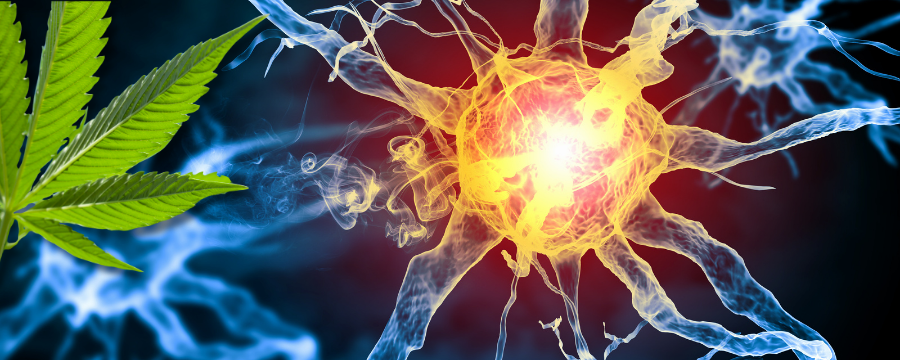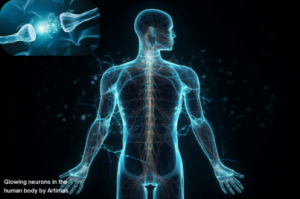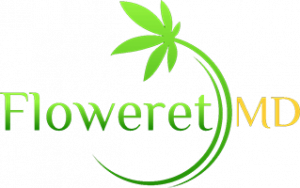- Texas Medical Cannabis Dispensaries vs Hemp Stores
- 5 Easy Steps to Fill Your Prescription
- Decoding Texas Cannabis Ratios: 20:1, 1:1, 0:1…
- Dosing & Product Education
- Texas CUP News & Legislation
- Conditions & Symptom Relief
- Practice Updates & Patient Stories
- Caregivers & Family Support
- Compliance & Legal FAQs
- Texas Medical Cannabis Guidebook 📚
- Complete Learning Library 📚
Endocannabinoid System 101 : Why It Matters for Texas Patients

The Hidden Network Balancing Your Body
Pain flares at 3 a.m. Stress rockets before a meeting. One night you sleep like a rock, the next you’re staring at the ceiling. What if those swings weren’t random? What if they were signals from an internal “thermostat” called the endocannabinoid system (ECS)?
Discovered in the 1990s after scientists isolated Δ9-THC, the ECS regulates mood, pain, appetite, immune response, sleep, and memory. Think of it as your body’s traffic cop, waving “slow down” or “speed up” to nerve cells, immune cells, and hormones.
For Texans using low-THC cannabis under the Texas Compassionate Use Program (TCUP), understanding this system isn’t trivia. It’s a roadmap to help you customize dosing, pick the right product, and explain to skeptical relatives why a micro-dose tincture calms nerve pain better than three ibuprofen.
1. A Brief History of the ECS
| Year | Milestone | Why It Matters |
|---|---|---|
| 1964 | Δ9-THC isolated (Mechoulam) | Proved a single plant molecule could alter human physiology. |
| 1988 | CB1 receptor mapped in rat brain | Receptor abundance hinted we produce THC-like chemicals ourselves. |
| 1992 | Anandamide discovered | First endogenous cannabinoid (“bliss molecule”). |
| 1993 | CB2 receptor cloned | Found outside brain—immune system now in the mix. |
| 1995–2005 | 2-AG, FAAH, MAGL identified | Enzymes that build & break down cannabinoids—druggable targets. |
Key insight: The ECS didn’t evolve for cannabis; cannabis hijacks a system already tuned for internal balance (homeostasis).
2. CB1 vs CB2: The Receptor Duo
 CB1: The Neural Gatekeeper
CB1: The Neural Gatekeeper
- Location: Brain, spinal cord, peripheral nerves
- Functions: Pain modulation, appetite, mood, short-term memory
- Cannabis Interaction: Δ9-THC = partial agonist → euphoria at high doses; low-THC formulations hit the receptor lightly, dampening pain without intense psycho-activity.
CB2: The Immune Moderator
- Location: Spleen, tonsils, gut, skin, bone, microglia
- Functions: Inflammation control, bone health, immune cell migration
- Cannabis Interaction: CBD + minor cannabinoids modulate CB2, contributing to anti-inflammatory effects without a “high.”
3. Why Low-THC Still “Works” at ≤ 1 %
Texas caps Δ9-THC by weight, not by effect. Manufacturers simply increase product size to fit more milligrams under the 1 % threshold. Example:
| Product | Weight | THC % | THC mg per unit |
|---|---|---|---|
| TCUP Capsule | 500 mg | 1 % | 5 mg THC |
| Standard gummy in CO | 3.5 g | 10 % | 350 mg THC |
Five milligrams may sound tiny, yet CB1 receptors respond in the micro-molar range. Combine that with 25–50 mg CBD and you get the entourage effect—multiple cannabinoids hitting multiple receptors for a synergistic punch.
4. What the Research Says (And Doesn’t)
Pain & Neuropathy
- Sanofi 2020 RCT (n = 387): 1 % THC + CBD spray cut neuropathic pain scores by 30 %.
- Floweret MD Case Series: witnessed the vast majority of our neuropathic patients improve their pain scores and reduce their traditional pharmaceutical pain medications (data on file).
PTSD & Anxiety
- VA Open-Label (2022): 67 % of veterans using low-THC tincture reported ≥ 50 % drop in nightmare frequency.
- fMRI studies show CBD + low THC normalizes amygdala hyper-reactivity (fear center).
Sleep
- Meta-analysis (2021) indicates cannabinoid therapy improves sleep efficiency by 29 % vs placebo.
Gaps to know: Texas law limits blinded placebo trials; much evidence is open-label. But patient-reported outcomes remain compelling—and regulators consider that real-world data.
5. Practical Dosing for TCUP Patients
Step 1: Start Low, Chart Everything
example charting
| Day | THC mg | CBD mg | Pain (1-10) | Sleep hrs | Notes |
|---|---|---|---|---|---|
| 1-3 | 2.5 | 25 | 7 | 5 | Groggy AM |
| 4-6 | 5 | 25 | 6 | 6 | Better sleep |
| 7-9 | 7.5 | 25 | 4 | 7 | Optimal |
Step 2: Adjust Every 3 Days
Increase THC by 2.5 mg (or half a lozenge) until relief with minimal side‐effects.
Step 3: Mind the Timing
- Night-Only Dosing: Best for sleep and next-day clarity.
- Split Dosing: Morning micro-dose (2 mg) + evening anchor (7 mg) for neuropathic pain.
Step 4: Re-Evaluate at 4 Weeks
If symptoms plateau > 5/10, schedule a tele-follow-up. Floweret MD may:
- Increase your monthly THC cap in CURT.
- Add CBG day‐time microcaps for inflammation.
- Switch from tincture to sublingual tablets, if available (faster onset).
6. Frequently Asked Questions
Q: Will low-THC still show on a urine test?
A: Yes. Metabolite presence depends on total mg, not percentage.
Q: Is CBD alone enough?
Sometimes. But studies show a small amount of THC enhances analgesia via CB1 synergy.
Q: Can children take low-THC?
Pediatric epilepsy patients often start with a high CBD: THC concentration, such as 20:1 (100mg CBD/5mg THC/ 1 mL), at weight based dosing. Floweret MD makes a plan with the parent/guardian to ensure an understanding of the dosing.
Q: What about liver disease?
We recommend starting at a lower THC dose and encourage monitoring of your AST/ALT quarterly with your primary medical doctor.
Q: Any drug interactions?
Clobazam, warfarin, and some SSRIs—your physician will review meds before prescribing.
7. Key Takeaways
- ECS = homeostasis engine controlling pain, mood, inflammation.
- CB1 (brain) + CB2 (immune) are the throttle; low-THC and CBD are gentle modulators.
- Texas’s ≤1 % THC limit still allows therapeutic milligrams via larger dosage forms.
- Careful titration + symptom journaling = optimum relief with minimal side effects.
- TCUP products are pharmacist-dispensed, batch-tested, and tracked—science + safety.
Conclusion
Your endocannabinoid system is always humming in the background—balancing immune cells, whispering to neurons, cueing “sleep mode.” Low-THC cannabis simply lends a helping hand.
Whether you’re battling neuropathy, PTSD, or sleepless nights, understanding the ECS empowers smarter dosing and better conversations with healthcare pros.
Ready to put ECS science into practice?
✅ Book a tele-visit with a TCUP-registered doctor
This content is educational and not medical advice. Consult a qualified healthcare professional before starting, changing, or stopping any cannabis or other treatment.
References
-
Zou, S., Kumar, U. (2018). Cannabinoid Receptors and the Endocannabinoid System: Signaling and Function in the Central Nervous System.
https://www.ncbi.nlm.nih.gov/pmc/articles/PMC5877694 -
Di Marzo, V. (2008). Endocannabinoid signaling in the brain: biosynthetic mechanisms in the limelight.
https://www.ncbi.nlm.nih.gov/pubmed/18597886 -
Texas Department of Public Safety – Overview of Low-THC Products
https://www.dps.texas.gov/section/compassionate-use-program



